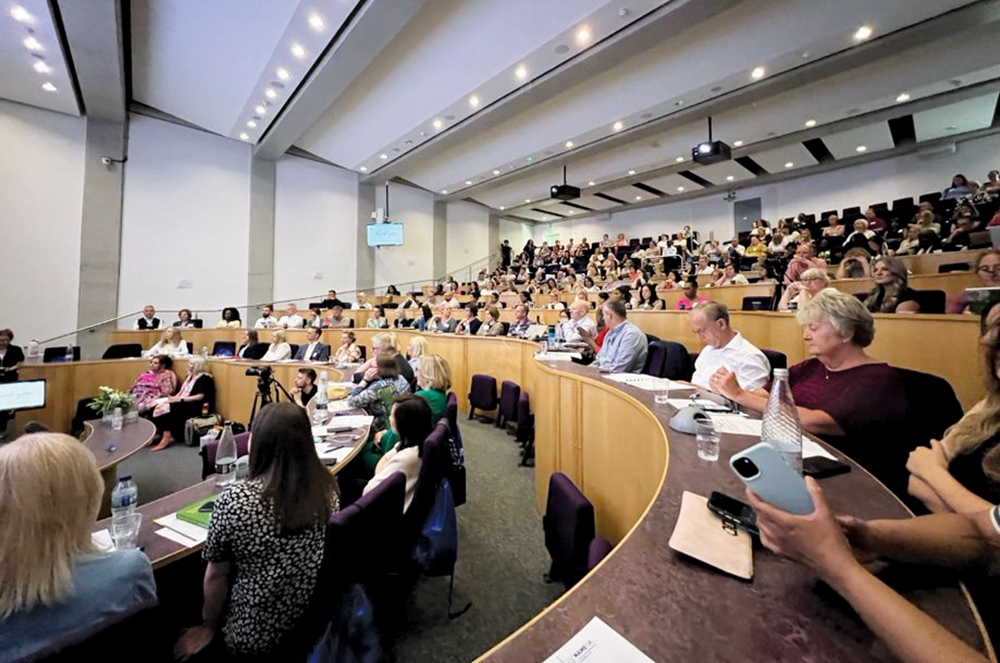Feature
The DAISY Foundation Story
How one family turned tragedy into an international program to recognize excellent nursing care
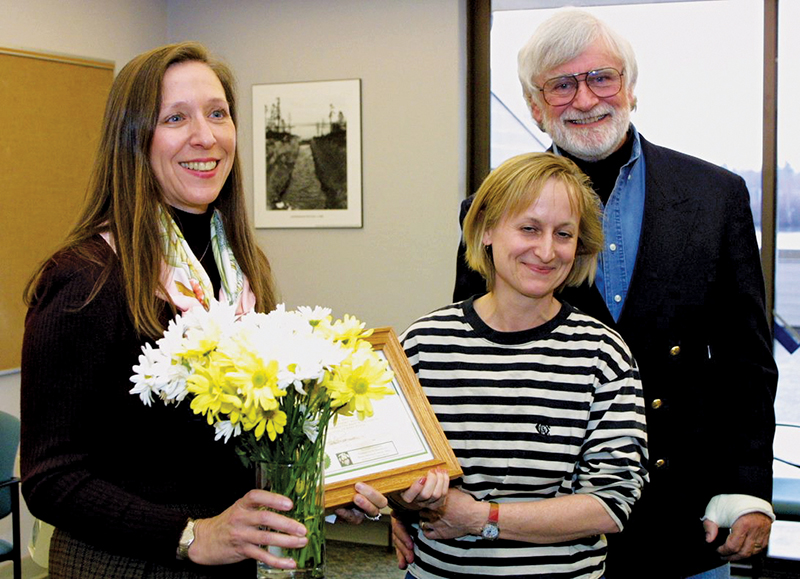
When a loved one dies, there’s an urge to make sense of the death and to ensure that the deceased is not forgotten by creating some kind of lasting memorial.
That’s what Mark and Bonnie Barnes did after they lost Patrick, Mark’s son and Bonnie’s stepson. Pat suffered from immune thrombocytopenia purpura (ITP), an autoimmune disorder that prevents blood from clotting properly. In 1999, when he was only 33 years old, Pat became very sick due to complications of ITP. His condition didn’t improve even after a series of medical procedures in two different hospitals, and he died eight weeks later.
Mark, Bonnie, and Pat’s wife Tena were by his side through those long and exhausting days and witnessed the accomplished, compassionate care provided by Pat’s nurses. By involving the entire family in their work, the nurses made the Barnes family feel somewhat less helpless.
Mark and Bonnie say that sensitive, holistic nursing care was “the one thing that filled our hearts and kept us going through the worst weeks of our lives in the hospital.”
THE FOUNDATION AND THE AWARD
Even in their grief, Mark, Bonnie, and Tena wanted to find a way to show their gratitude. Soon after Pat’s death, the family filed the paperwork to form a nonprofit corporation, The DAISY Foundation. (DAISY is an acronym that stands for Diseases Attacking the Immune SYstem.)
A central goal of the new foundation was to establish a program “dedicated to Pat’s memory, spirit, and sense of humor” that would recognize and honor nurses like the ones who had shown such concern for him during his illness.
Many patients with diseases like Pat’s must travel long distances for care or to enter experimental programs. In those cases, nurses stand in for the patient’s family. As the Barnes family had experienced firsthand, that human touch can make an enormous difference to patients and to their families.
This led to the creation of The DAISY Award, a nurse recognition program to honor extraordinary compassionate care. It began at the hospital where Pat was cared for as a way to reconnect with the nurses who remembered him. But the program grew from there.
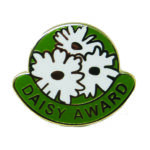 Initially, one nurse was selected each month, nominated by a patient, family member, or colleague and chosen by a committee of nurses. As part of the recognition, nurses received dinner and a spa treatment with cinnamon rolls for the staff. The nurse chosen would also get a certificate and a pin as a remembrance (as Bonnie says, “Nurses love pins!”).
Initially, one nurse was selected each month, nominated by a patient, family member, or colleague and chosen by a committee of nurses. As part of the recognition, nurses received dinner and a spa treatment with cinnamon rolls for the staff. The nurse chosen would also get a certificate and a pin as a remembrance (as Bonnie says, “Nurses love pins!”).
In 2002, the spa and dinner portion of the award was discontinued — it turned out that most nurses didn’t take advantage of it. The following year, a new gift, a hand-carved stone sculpture called “The Healer’s Touch,” was added to the award. Later, the program was expanded to include pins for all nominees.
AN INTERNATIONAL EFFORT
Early on, the Barnes family traveled at their own expense to individual hospitals to present the awards. As the program expanded, The DAISY Foundation eventually charged participating hospitals a small fee to help cover the costs, first sending out a questionnaire to participants asking what a fair fee would be. Later, corporate sponsors such as Cherokee Medical Uniforms and Hillrom joined in. (Cinnabon provided the cinnamon rolls.)
Although The DAISY Foundation has established a detailed presentation guide to ensure that the awards are presented in a consistent manner, some facilities also add banners or flowers to make the award more meaningful to their employees.
The Barnes family began attending nursing conferences to promote the work of the DAISY Foundation, and The DAISY Award was identified as a form of meaningful recognition, one of the six evidence-based Healthy Work Environment standards defined by the American Association of Critical-Care Nurses.
This led to inquiries from foreign hospitals about bringing the award to their facilities. The first participant outside the U.S. was the Hospital for Sick Children (SickKids), a pediatric hospital in Toronto, Canada. The first outside North America was King Faisal Specialist Hospital & Research Centre in Riyadh, Saudi Arabia.
Bonnie says the rapid and continual expansion of the program shows “the universal power of recognition and gratitude.”
She continues, “We are passionate about this work, and we are grateful for the opportunity to shine a light on all the right in healthcare by celebrating the art of nursing around the world.”
ELEVATING NURSES
Before I started this story, I must confess I wasn’t really familiar with The DAISY Award or the foundation. As a public health nurse, my hospital career ended well before the program was established. That’s really my loss because the good it has done is far more powerful than all the “Thank you, healthcare workers” signs and 7 p.m. pot-banging of the early months of the pandemic.
Recognizing nurses’ empathy and kindness has also gone a long way towards improving nursing culture, boosting job satisfaction, reducing burnout, and giving patients and families a chance to give back to the nurses who cared for them.
Bonnie notes that honorees are often surprised to be nominated for the award, saying that they were just doing their jobs and that the compassionate care they provided was nothing special. However, being recognized is a great feeling, and seeing a coworker or colleague’s excellent work celebrated in this way raises the bar for your own practice, which contributes to better care for all.
Working Nurse thanks the Barnes family and The DAISY Foundation for their efforts to honor and celebrate nursing.
Sidebar: DAISY Blooms
Today, almost 6,000 institutions in 39 countries participate in The DAISY Award program. To date, there have been 2.5 million nominations and about 200,000 honorees. There are now awards for nurse leaders, nursing-led teams, students, nursing faculty, and special awards for those who advance health equity and whose leadership or nursing practice closely aligns with the ANA Code of Ethics for Nurses. The foundation has also awarded over $800,000 in research grants for nurses.
Sidebar: Shining the Light on All the Right
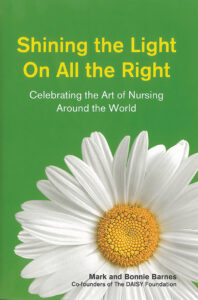 For a comprehensive history of how the DAISY program began, along with photos and many examples of nominees and honorees, check out cofounders Mark and Bonnie Barnes’ 2020 book Shining the Light on All the Right: Celebrating the Art of Nursing Around the World, which received a 2020 Book of the Year Award from the American Journal of Nursing. To learn more about The DAISY Foundation and the award program, including stories of more than 90,000 excellent nurses and information on how to nominate someone, visit www.daisyfoundation.org.
For a comprehensive history of how the DAISY program began, along with photos and many examples of nominees and honorees, check out cofounders Mark and Bonnie Barnes’ 2020 book Shining the Light on All the Right: Celebrating the Art of Nursing Around the World, which received a 2020 Book of the Year Award from the American Journal of Nursing. To learn more about The DAISY Foundation and the award program, including stories of more than 90,000 excellent nurses and information on how to nominate someone, visit www.daisyfoundation.org.
Sidebar: The Healer’s Touch Sculpture
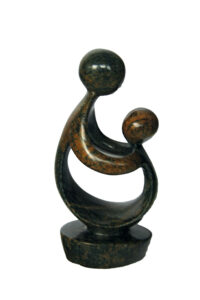 IN 2003, THE DAISY FOUNDATION added a new gift for each DAISY Award honoree: The Healer’s Touch, a hand-carved stone sculpture crafted by master stonecutters of the Shona people of Zimbabwe. The design recognizes and honors the relationship between healers and patients.
IN 2003, THE DAISY FOUNDATION added a new gift for each DAISY Award honoree: The Healer’s Touch, a hand-carved stone sculpture crafted by master stonecutters of the Shona people of Zimbabwe. The design recognizes and honors the relationship between healers and patients.
The Shoni sculptors are equitably paid for their work, and with so many sculptures needed each year, they have also become an important source of income in the area during Zimbabwe’s economic downturn and political turmoil.
The DAISY Foundation website has more information on the crafting of these unique sculptures.
CHRISTINE CONTILLO, RN, BSN, PHN, is a public health nurse with more than 40 years of experience, ranging from infant care to geriatrics. She enjoys volunteering for medical missions.
In this Article: Recognition and Retention


